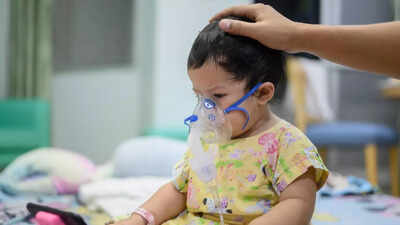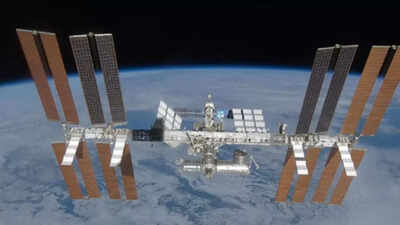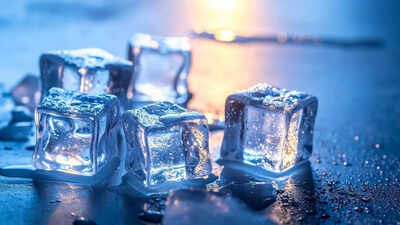How festival firecrackers threaten baby lungs: What science reveals |

Festivals in India are incomplete without fireworks lighting up the sky. But behind the sparkle lies a cloud of smoke that’s dangerous, especially for babies. Their lungs are still developing, their breathing rate is faster, and their immune defenses are weaker. The pollutants from firecrackers, such as fine particulate matter, heavy metals, and sulfur compounds, can irritate their airways and trigger respiratory problems.A study by researchers at IIT Delhi found that PM2.5 levels rise nearly 16 times during Diwali nights. The same study reported that heavy metals like arsenic and lead increase sharply in the air after firecracker bursts. For babies, who inhale more air per kilogram of body weight than adults, even short-term exposure can be harmful.
How firecracker pollution affects baby lungs
When babies breathe in smoke from fireworks, their tiny airways get inflamed. The pollutants damage the delicate lining of the respiratory tract, reducing the lungs’ ability to filter air. Over time, this exposure may interfere with lung development and increase the risk of chronic breathing problems.Toxic compounds like perchlorates and nitrates released during fireworks can also enter the bloodstream, affecting oxygen delivery and immunity. According to pediatric experts, repeated exposure to these pollutants may lead to early signs of asthma or bronchitis in children living in polluted urban areas.
Short-term symptoms of firecracker exposure in babies
The harmful effects of festive pollution can show up within hours. Parents might notice:
- Coughing or wheezing that gets worse at night
- Watery eyes and nasal congestion
- Trouble breathing or chest tightness
- Increased irritability due to breathing discomfort
These symptoms tend to worsen indoors when homes are not properly ventilated, as smoke particles linger in the air for hours after the fireworks end.
Long-term effects of firecrackers on baby lungs
Repeated exposure to firecracker smoke and city pollution can slow lung growth and raise long-term risks. Children exposed to such environments often have lower lung capacity and a higher tendency to develop respiratory allergies. Studies have linked prolonged exposure to PM2.5 with increased hospital visits for asthma and bronchitis in young children.Pollutants like lead and cadmium, which settle on surfaces, can also enter the body through hand-to-mouth contact. This indirect exposure adds another layer of health risk for babies and toddlers.
How the Diwali pollution study proves the link
The Delhi air quality study clearly showed that during Diwali, 95% of PM2.5 particles in the air come from firecracker emissions. These fine particles carry toxic elements that settle deep inside the lungs. The study’s data revealed that even a single night of heavy fireworks can push air quality into the “severe” category.For babies, this sudden pollution spike acts like an acute respiratory stress event. Hospitals in Delhi, Mumbai, and Kolkata have consistently reported an increase in pediatric breathing emergencies following Diwali nights.
Who is most at risk from firecracker pollution
While all babies are vulnerable, some face higher risks:
- Premature or low birth weight babies
- Infants with congenital heart or lung issues
- Babies living near densely populated or polluted areas
- Children exposed to secondhand smoke indoors
These babies have underdeveloped lungs and less efficient oxygen exchange, which makes them highly sensitive to even minor pollution spikes.
How parents can protect baby’s lungs during Diwali
There is no way to eliminate the pollution, but smart precautions can help reduce exposure:
- Keep babies indoors during peak firecracker hours (evening and night).
- Use HEPA air purifiers in rooms where babies sleep.
- Keep windows and doors shut when outdoor air quality worsens.
- Avoid outdoor celebrations with infants.
- Wipe surfaces regularly to remove residue from firecracker smoke.
- Keep your baby hydrated and well-fed to support immunity.
- Encourage smoke-free and cracker-free celebrations in your community.
These steps help reduce the concentration of harmful pollutants in the air your baby breathes.Firecrackers may bring festive joy, but their smoke leaves behind invisible damage, especially for the youngest and most vulnerable. Babies’ lungs are developing rapidly, and exposure to heavy pollution can interfere with that process.The Delhi study showing a 16-fold increase in PM2.5 during Diwali should serve as a reminder that festive fun should not come at the cost of child health. Choosing cleaner celebrations and keeping babies protected can help ensure that the spirit of Diwali remains bright, not breathless.Also read| India’s sunshine hours are shrinking every year: Scientists link alarming decline to pollution











